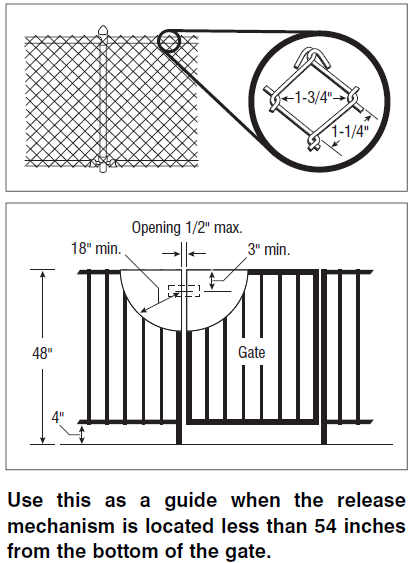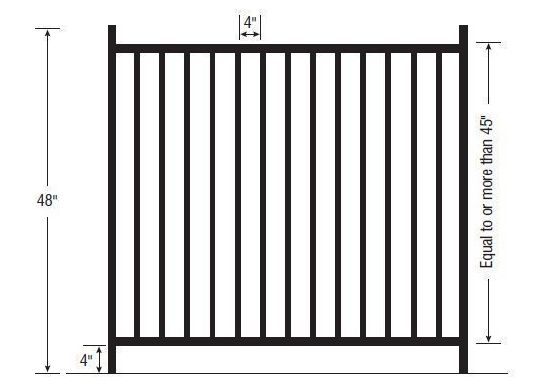How to plan for the unexpected
In some of the nation’s sunbelt, drowning has been the leading cause of accidental death in the home of children under 5 years old. The information below can help parents and caregivers provide young children with the protection they deserve.
Each year, nationwide, about 300 children under 5 years old drown in swimming pools, usually a pool owned by their family. In addition, more than 2,000 children in that age group are treated in hospital emergency rooms for submersion injuries. Medical costs for submersion victims during the initial hospitalization alone can be quite high. Costs can range from an estimated $4,000 for a victim who recovers fully to $160,000 for a victim with severe brain damage. Some severely brain damaged victims have initial hospital stays in excess of 120 days and expenses in excess of $300,000.
Following are just a few facts uncovered by the U .S. Consumer Product Safety Commission (CPSC) in a comprehensive study of drowning and submersion incidents involving children under 5 years old in Arizona, California, and Florida.
- Seventy-five percent of the submersion victims studied by CPSC were between 1 and 3 years old; 65 percent of this group were boys. Toddlers, in particular, often do something unexpected because their capabilities change daily.
- At the time of the incidents, most victims were being supervised by one or both parents. Forty-six percent of the victims were last seen in the house; 23 percent were last seen in the yard or on the porch or patio; and 31 percent were in or around the pool before the accident. In all, 69 percent of the children were not expected to be at or in the pool, yet they were found in the water.
- Submersion incidents involving children usually happen in familiar surroundings. Sixty- five percent of the incidents happened in a pool owned by the child’s family and 33 percent of the incidents happened in a pool owned by friends or relatives.
- Pool submersions involving children happen quickly. A child can drown in the time it takes to answer a phone. Seventy-seven percent of the victims had been missing from sight for 5 minutes or less.
- Survival depends on rescuing the child quickly and restarting the breathing process, even while the child is still in the water. Seconds count in preventing death or brain damage.
- Child drowning is a silent death. There’s no splashing to alert anyone that the child is in trouble.
The following barrier recommendations are the result of identifying key parameters that typically contribute to child drowning in backyard pools. These recommendations are the minimum steps you can take to make your home a safe place for your child.
Barriers are not childproof,but they provide layers of protection for a child who strays from supervision. Barriers give parents additional time to locate a child before the unexpected becomes a reality.
Barriers include a fence or wall, door alarms for the house, and a power safety cover over the pool. Barriers also may be used to protect children from accessing hot tubs and spas. Use the following recommendations as a guide:
FENCES & GATES
- Install a fence or other barrier, such as a wall, completely around the pool. If the house is part of the barrier, the doors leading from the house to the pool should be protected with an alarm or the pool should have a power safety cover. Alarm and cover details are below.
- The fence or other barrier should be at least 4 feet high. It should have no foot- or handholds that could help a young child to climb it.
- Vertical fence slats should be less than 4 inches apart to prevent a child from squeezing through.
- If the fence is chain link, then no part of the diamond-shaped opening should be larger than 1-3/4 inches.

- Fence gates should be selfclosing and self-latching. The gate should be well maintained to close and latch easily. The latch should be out of a child’s reach.
DOOR ALARMS
- If the house forms one side of the barrier, then doors leading from the house to the pool should be protected with alarms that produce an audible sound when a door is unexpectedly opened.
- Install an alarm that can be temporarily turned off by an adult for a single opening of the door by using a keypad or switch that is out of a child’s reach.
Battery and electrically powered alarms are available. The keypad switch can be used by adults who wish to pass through the door without setting off the alarm. It should be placed high on all doors leading from the house to the pool. Affordable and easily installed alarms are available. An alarm signal immediately tells a parent that a door has been opened.
POWER SAFETY COVERS:
- Power safety covers over the pool may be used as an alternative to door alarms. A power safety cover should meet the requirements of the ASTM pool cover standard that addresses labeling requirements and performance. ASTM requires that a cover withstand the weight of two adults and a child to allow a rescue should an individual fall onto the cover. The standard also requires quick removal of water from the cover. A young child can drown in just inches of water.
- A power safety cover is a motor powered barrier that can be placed over the water area. Motor-driven covers easily open and close over the pool. When the power safety cover is properly in place over the pool, it provides a high level of safety for children under 5 years old by inhibiting their access to the water.
ABOVE-GROUND POOLS
- Steps and ladders leading from the ground to the pool should be secured and locked, or removed when the pool is not in use.
RULES FOR THE POOL
- Instruct babysitters about potential pool hazards to young children and about the use of protective devices, such as door alarms and latches. Emphasize the need for constant supervision.
- Never leave a child unsupervised near a pool. During social gatherings at or near a pool, appoint a “designated watcher” to protect young children from pool accidents. Adults may take turns being the “watcher. “When adults become preoccupied, children are at risk.
- If a child is missing, check the pool first. Seconds count in preventing death or disability. Go to the edge of the pool and scan the entire pool, bottom and surface, as well as the pool area.
- Do not allow a young child in the pool without an adult.
- Do not consider young children to be drown proof because they have had swimming lessons. Children must be watched closely while swimming.
- Do not use flotation devices as a substitute for supervision.
- Learn CPR (cardiopulmonary resuscitation). Babysitters and other caretakers, such as grandparents and older siblings, should also know CPR.
- Keep rescue equipment by the pool. Be sure a telephone is poolside with emergency numbers posted nearby.
- Remove toys from in and around the pool when it is not in use. Toys can attract young children to the pool.
- Never prop open the gate to a pool barrier.